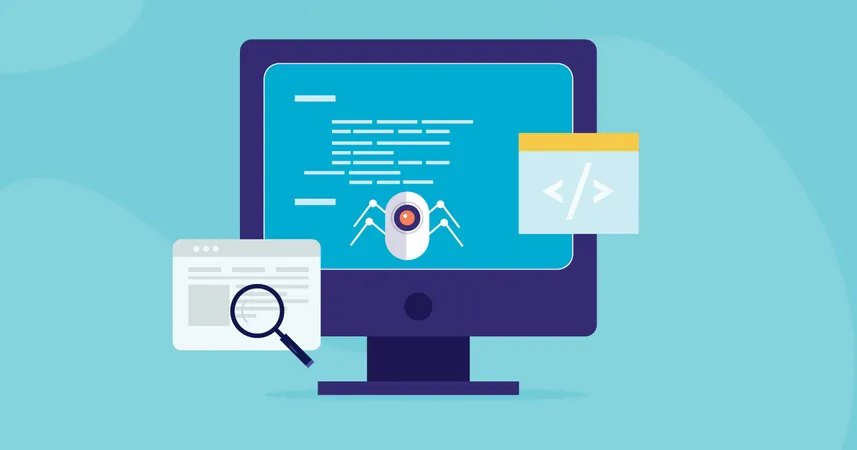
Groundbreaking Discovery: Researchers Enable Animal Cells to Photosynthesize!
2024-11-13
Author: Rajesh
Groundbreaking Discovery: Researchers Enable Animal Cells to Photosynthesize!
In a revolution that could change the face of biotechnology, researchers have successfully endowed animal cells with the ability to photosynthesize—an achievement thought impossible until now. This remarkable advancement offers the potential to reshape various fields such as medicine, food production, and sustainable energy.
Chloroplasts, the cellular structures responsible for photosynthesis in plants and algae, are believed to have originated more than a billion years ago from cyanobacteria, which formed symbiotic relationships with primitive cellular organisms. This historical context makes the current research particularly significant as scientists have now replicated this ancient process in living animal cells.
A team from Japan, led by Professor Yukihiro Matsunaga from the University of Tokyo, pioneered a method to isolate functional chloroplasts from the primitive algae species Cyanidioschyzon and transplant them into Chinese hamster ovary (CHO) cells, a commonly-used cultured animal cell line. Excitingly, these transplanted chloroplasts not only survived but retained their functionality.
Professor Matsunaga emphasized, "To our knowledge, this is the first time that photosynthetic electron transport has been confirmed in chloroplasts transplanted into animal cells." This stack of electron transport is vital for generating chemical energy in the cells, essential for various metabolic functions.
To facilitate this transplantation, the research team employed a process called phagocytosis, allowing the CHO cells—typically known for digesting foreign entities—to uptake the chloroplasts. Advanced imaging techniques, including fluorescence laser microscopy and super-resolution microscopy, were utilized to monitor the behavior of both the cells and the chloroplasts. These investigations revealed that the chloroplasts integrated into the cytoplasm and even clustered around the cell nucleus, with the CHO cells continuing to divide normally.
Remarkably, subsequent electron microscopy assessments indicated that the thylakoid membrane structure of the chloroplasts, crucial for photosynthesis, remained intact for at least 48 hours post-transfer. Measurements confirmed that photosynthetic activity was normal during this period. However, by the fourth day, the thylakoid membranes began to collapse, sharply reducing the chloroplasts' photosynthetic efficacy.
This pioneering research opens exciting new avenues in tissue engineering. Artificial organs and cultured tissues often face growth limitations due to low oxygen levels. If animal cells can incorporate chloroplasts, they could potentially produce oxygen and promote tissue growth simply by exposing them to light, creating a self-sustaining system.
However, the road ahead is filled with challenges. The study's authors highlight the need for new technologies that can prolong the chloroplasts' photosynthetic activity within animal cells. Future work will also involve measuring the oxygen generated and carbon dioxide absorbed in these engineered cells through techniques like isotope labeling.
Ultimately, the researchers aim to forge “planimal” cells that combine plant-like capabilities with animal cell attributes. The implications of successful integration of these cellular technologies could be transformative, influencing sectors such as medical research, agriculture, and renewable energy.
Stay tuned as this groundbreaking research unfolds, potentially reshaping our understanding of cellular biology and the interactions between different life forms. The future might hold the promise of a world where humans harness the power of both flora and fauna to thrive!



 Brasil (PT)
Brasil (PT)
 Canada (EN)
Canada (EN)
 Chile (ES)
Chile (ES)
 España (ES)
España (ES)
 France (FR)
France (FR)
 Hong Kong (EN)
Hong Kong (EN)
 Italia (IT)
Italia (IT)
 日本 (JA)
日本 (JA)
 Magyarország (HU)
Magyarország (HU)
 Norge (NO)
Norge (NO)
 Polska (PL)
Polska (PL)
 Schweiz (DE)
Schweiz (DE)
 Singapore (EN)
Singapore (EN)
 Sverige (SV)
Sverige (SV)
 Suomi (FI)
Suomi (FI)
 Türkiye (TR)
Türkiye (TR)